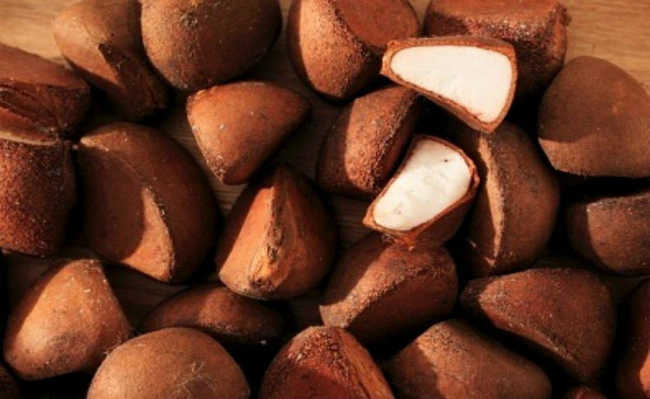Leg pain: what it can be and how to relieve it
Check out a list of home remedies that relieve leg pain

Edited and resized image by Georgie Cobbs is available on Unsplash
Leg pain can be caused by several reasons. Among the most common diseases that cause leg pain are circulation problems, sciatica, varicose veins, neuropathy (disease of the nervous system), fibromyalgia, psychosomatic illness, inflammation, among others. Other causes can be gluten allergy or intolerance, use of high heels, lupus, gout, Paget's disease, candidiasis infection, vitamin B12 deficiency, excessive physical effort, smoking, overweight, alcohol consumption, use of birth control pills, incorrect posture, among others.
Based only on the complaint of leg pain, it is difficult to diagnose the cause of the problem, for this it is necessary to consult a doctor or doctor to assess the patient's life history, habits, socioeconomic background, tests and other symptoms correlated to leg pain .
However, in addition to the diagnosis of traditional medicine, it is necessary to inform and know oneself, as diseases and/or symptoms can have multifactorial causes and often the improvement lies in changing some long-term habit. Sometimes natural and/or synthetic remedies are just a way to treat/remedy the symptom, not an effective cure. But they are still necessary, after all, no one deserves to feel pain. So, check out a list of natural remedies that will help relieve leg pain:
Andiroba oil
Andiroba oil has antiseptic, anti-inflammatory, healing, insecticide and other benefits, which are why it is exported to cosmetic industries in France, Germany and the United States, in addition to being sold in various regions of Brazil.
Due to its anti-inflammatory properties, andiroba oil can be a good ally in combating leg pain. To enjoy its benefits, massage andiroba oil along the entire length of your legs and feet, using circular and relaxing movements.
- To learn more about andiroba oil, check out the article “What is andiroba oil used for”.
Basil anise essential oil
Aniseed basil, also popularly known as anise-scented alfaca and scientifically as Ocimum selloi Benth, is a perennial plant whose leaves and flowers are the main parts used.
- Basil: benefits, how to use and plant
Its essential oil has cineole, methylchavicol, linalool, flavonoids and triterpenic acids (to learn more about terpenes, see the article "What are terpenes?") The compounds of this basil have therapeutic, antimicrobial and analgesic properties. It can be used. in the form of an infusion (tea) for digestive problems and elimination of intestinal gas and in the form of a tincture diluted in water for mouthwash (indicated in cases of thrush), in addition to its proven action as an insect repellent.
As an analgesic, the essential oil of aniseed basil helps to combat leg pain. To apply it, first take the allergy test: dissolve one drop of basil essential oil in a tablespoon of carrier oil and apply it to a small space on the inside of your forearm. If by chance you start to feel burning, it means that you are allergic to the essential oil of aniseed basil; in this case, dip a cotton wool in sunflower oil (or any other vegetable carrier oil) and remove the essential oil residue from the arm with the cotton. Look for another home remedy to relieve your pain.
If you were tested and did not show allergy symptoms, it means that you can use basil essential oil. Then dissolve 15 drops of aniseed basil essential oil in half a glass of sunflower oil or coconut oil or grapeseed oil and massage the mixture all the way down the legs and feet. To learn more about the properties of the different types of basil, check out the article "Basil tea and other recipes to enjoy benefits".
yellow clay
Yellow clay provides relief from joint pain and recovery from injuries that were caused by blows or sprains, as it increases local circulation, oxygenating the region, making it excellent for treating leg pain.
- Yellow clay: what is it for?
It can be used on all skin types, however, dry and mature skin is more suitable due to the actions it will provide. The presence of silicon in its composition makes yellow clay an excellent rejuvenator, as this is a catalyst for the formation of collagen in the skin and to increase elasticity. In this way, it fights and slows down skin aging. Silicon also helps in the reconstitution of skin tissues and acts as an astringent, detoxifying and purifying - these properties help to reduce inflammation and provide a soothing effect, which is great for irritated skin. It also has a healing action due to the aluminum present, which inhibits the development of bacteria that can cause pimples, cellulite and even pneumonia. It can be used on wounds to accelerate tissue regeneration and to contain bleeding, as it has hemostatic properties.
In addition to silicon, iron and potassium have the ability to maintain skin hydration, nourishing it, toning it and giving it elasticity. When applied to the body, it provides a feeling of well-being and relieves stress.
Yellow clay can be used on acne-prone skin, as in addition to having an anti-inflammatory action, it also helps to reduce blemishes and absorb oil, often the main reason for the appearance of acne (especially in the case of the face), without dehydrating the skin. skin.
Yellow clay is found in powder form, so to apply it, mix it with warm pure water or saline solution until it forms a cream. Do not mix with body or hair moisturizing creams when applying it. To relieve leg pain, apply this warm clay cream over your legs and allow it to dry (or leave for 20 minutes); when the water in the clay has evaporated, rinse it off in the hot bath.
rosemary essential oil
Rosemary is popularly known to be effective in treating leg pain. But not only that, rosemary also has antioxidant, anti-inflammatory, antimycotic, antimicrobial, healing, antidandruff and mental stimulant properties.
- Essential Oils: A Complete Guide
To relieve leg pain, rosemary essential oil is great as it concentrates the anti-inflammatory properties of rosemary in small amounts. To use it, first do the allergy test as explained above for the use of andiroba oil. If after the test you do not have symptoms of allergy, dissolve 15 drops of rosemary essential oil in half a glass with sunflower oil or coconut oil or grapeseed oil and spread on legs and feet with a relaxing circular massage.
- How to Make Homemade Rosemary Oil
cold water bag
When leg pain is caused by inflammation and local swelling, we can treat it with cold compresses. This method reduces blood flow to the painful area, and consequently swelling and inflammation.
There are different types of cold compresses. There are those bought in pharmacies and also those you can make at home:
Cold towel:
This method is very easy to do at home. Just wet a clean towel, wring it out to remove excess water, place it in a plastic bag and let it cool in the freezer for 20 minutes. After these steps, you can apply it on the pain site.
As the towel will not stay cold for a long time, it is ideal to have other replacement towels that have also undergone cooling.
Ice pack:
This type of compress is ideal for emergency situations. Just take a plastic bag, fill it with ice and apply it to the pain site.
Ginger
Ginger has properties capable of eliminating muscle pain and inflammation. As it is a food rich in potassium and magnesium, it stimulates and improves blood circulation, which facilitates blood pumping and helps reduce leg pain.
- Benefits of Ginger and its Tea
- Ginger tea: how to make
A study published in the journal Osteoarthritis Cartilage concluded that patients with painful arthritis of the knee who received ginger experienced less pain and loss of movement than those who received the placebo.
To enjoy its benefits, you can drink two cups of ginger and lemon tea a day and apply ginger oil to your legs with a relaxing circular massage.
legs up
If you suffer from circulation problems, it may be that your leg pains are sometimes accompanied by swelling and redness in your feet. In this case, it is recommended to place the feet resting upwards. That way the blood will come down and you will rest your legs. You can also use this method together with others, especially massage. To learn more about taking care of the circulatory system, check out the article "Circulatory system cleansing foods: myths and truths".
Relaxing self-massage
Massage helps to activate circulation, relaxes, eliminates toxins and metabolic waste, reduces fatigue and anxiety. In addition, when doing massage, the touch stimulates the release of endorphins, substances responsible for the feeling of well-being. Using a cream or body oil of your choice, do a self-massage. You can also use the essential oils of rosemary, basil or other relaxing essential oils to facilitate the massage. See how to apply these oils in the topics above. See how to perform self-massage in the video.
- Discover 12 types of massage and their benefits
move or sit
It is necessary to avoid sedentary lifestyle. But to avoid it it is not necessary to become an athlete overnight. With small changes in daily habits, we can experience significant improvements in health.
If your work requires you to stay seated, whenever you can, get moving, make the most of your pauses to move, to walk. If on your way back home you can avoid escalators, avoid them. If your routine requires you to stand a lot of time, as in the case of security guards, for example, during breaks, take the opportunity to sit, walk and stretch. When you wake up in the morning, try taking a 15-minute walk. Walking the dog, avoiding tight clothes and/or riding a bicycle also help a lot.
- Twenty exercises to do at home or alone
improve food
About 90% of the body's immune potential is in the gut. So it is necessary to take good care of this organ to avoid diseases that cause pain in the legs. To do this, reduce the salt in your food, avoid preserves, sausages, red meats, soft drinks, sweeteners, sugary juices and industrialized or difficult-to-digest foods, such as gluten (to learn more about industrialized foods, check the article "What are they in natura, processed and ultra-processed foods").
Increase your fiber intake. They are essential to reduce the incidence of varicose veins and hemorrhoids. You can find them in fruits and vegetables, especially in their raw state.
- What is dietary fiber and its benefits?
Consume dark green leaves, they increase blood oxygenation, help the liver eliminate toxins and are a source of calcium.
- Nine Calcium-Rich Foods That Are Not Dairy
Season your salad with lemon or add it to natural, sugar-free fruit juices and sweets. Lemon is rich in vitamin C and flavonoids and also favors the intestinal tract. Depending on your case, over time maintaining good eating habits, you will find that they will work as a remedy for leg pain. Maintaining a good diet also helps fight obesity, which can cause leg pain from being overweight.
- Foods rich in vitamin C
- What is vitamin C and why is it important?
Remember: changing your diet is for life, not just for a week or a month. You will only be able to reap the benefits of this change if you make it a healthy long-term habit, without starving yourself or consuming products that are dangerous to your health.










